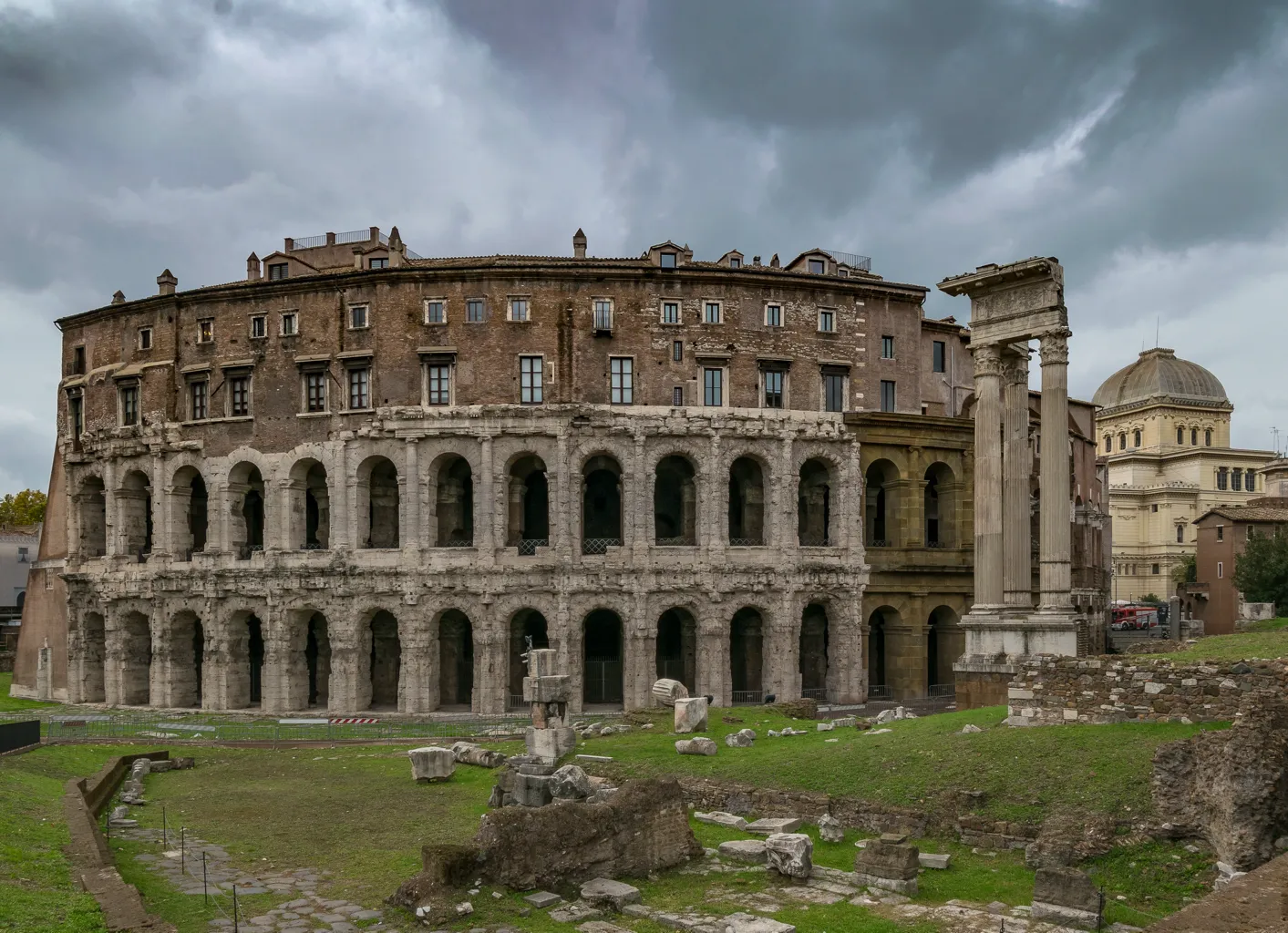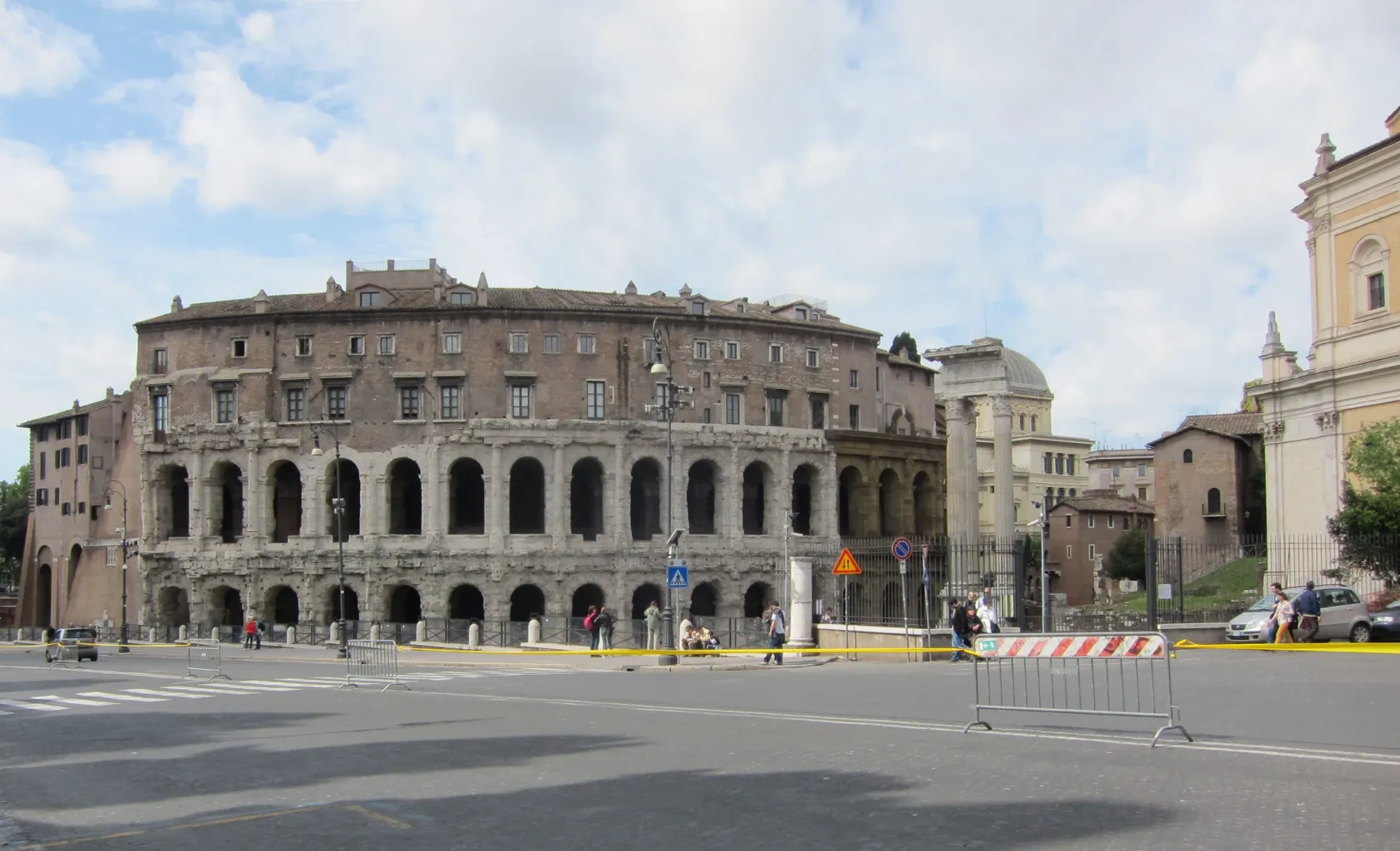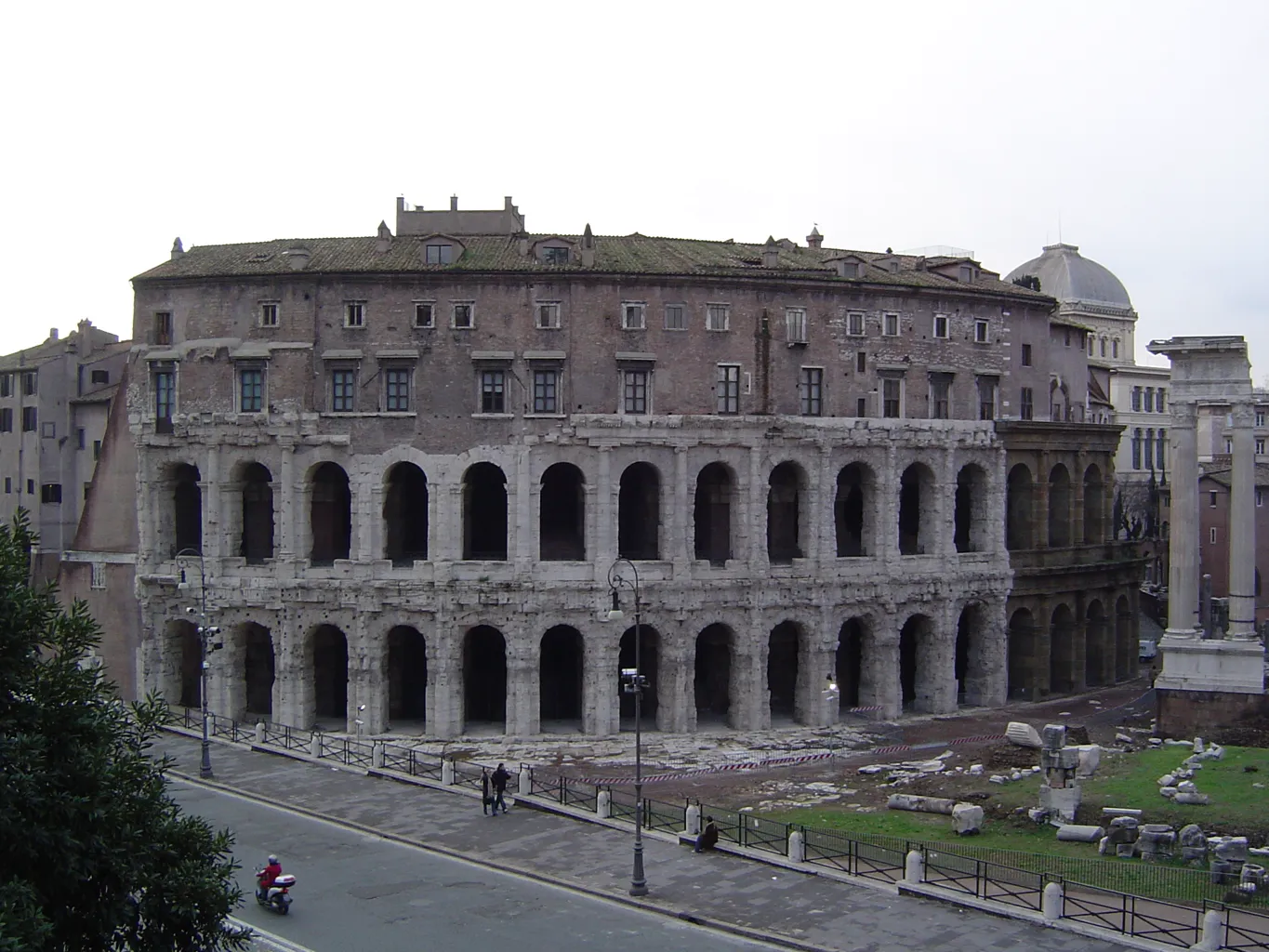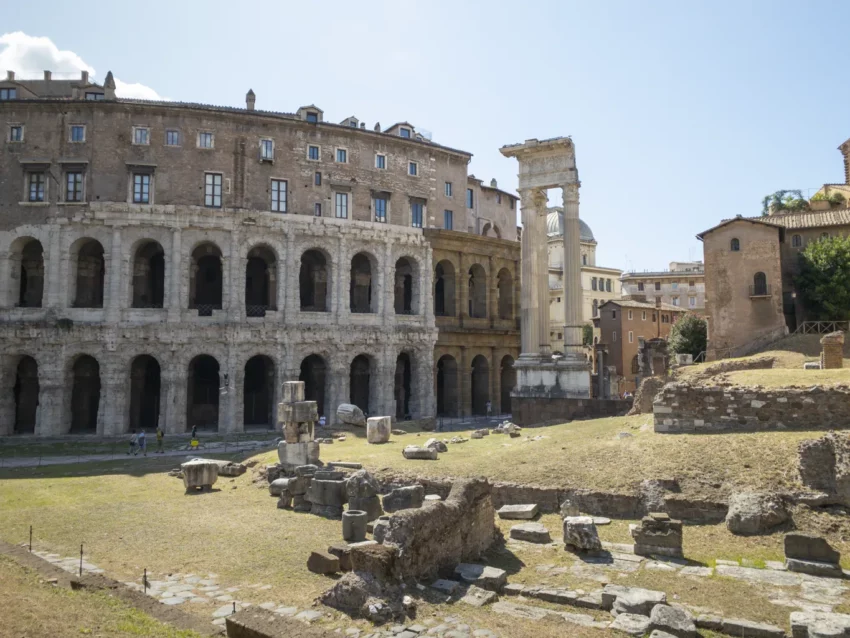The Theatre of Marcellus: Rome’s Ancient Spectacle
The Theatre of Marcellus, or Teatro di Marcello in Italian, stands as a remarkable remnant of ancient Rome. Built in the final years of the Roman Republic, this open-air theatre in the Sant’Angelo rione of Rome continues to captivate both locals and tourists. Once a vibrant venue for drama and song, it now serves as a historic spectacle and a popular tourist attraction.
Get your dose of History via Email

Construction and Early Use
Julius Caesar cleared the space for the theatre, but he was murdered before construction began. By 17 BC, the theatre was advanced enough to host part of the ludi saeculares celebrations. Augustus completed and inaugurated it in 12 BC, naming it after his deceased nephew, Marcus Claudius Marcellus.
The theatre’s impressive size set it apart. With a diameter of 111 meters, it could hold between 11,000 and 20,000 spectators, making it the largest and most important theatre in ancient Rome. A late 4th-century catalogue recorded its seating capacity at 17,580 people. Built mainly of tuff and concrete faced with stones in the opus reticulatum pattern, it was sheathed in white travertine. Notably, it was the earliest building in Rome to use fired Roman brick, a new technique from the Greek world.
The theatre featured a network of arches, corridors, tunnels, and ramps. These were adorned with engaged columns in Greek orders: Doric at the base, Ionic in the middle, and possibly Corinthian at the top. Openings in the theatre offered views of the Tiber Island, enhancing its appeal.

The Theatre’s Later Years
By the early 4th century, the theatre fell out of use. Its materials were repurposed for structures like the Pons Cestius in 370 AD. Despite this, Petronius Maximus restored its statues in 421, and small residential buildings occupied the remaining structure. In the Early Middle Ages, the theatre served as a fortress for the Faffo or Fabi family, later passing to the Pierleoni family in the 11th century. This transition spared the complex from further destruction.
The Savelli family took over in the 13th century. In the 16th century, architect Baldassare Peruzzi designed the Orsini residence atop the ancient ruins. By the 19th century, street level rises meant almost half the ground floor was below street level. Today, the upper floors house apartments, and the theatre’s surroundings host small summer concerts.

Architectural Influence and Modern Copies
The Theatre of Marcellus significantly influenced later architectural designs. In the 17th century, English architect Sir Christopher Wren acknowledged its impact on his design for the Sheldonian Theatre in Oxford. A 1:100 scale model of the theatre is displayed in Room IX of the Museum of Roman Civilization in Rome, showcasing its grandeur to modern audiences.
Conclusion
The Theatre of Marcellus is more than a historical structure; it is a testament to Rome’s architectural innovation and cultural vibrancy. From its origins as a venue for drama and song to its modern role as a historical landmark, the theatre continues to tell the story of ancient Rome. Visitors to Rome can explore this architectural marvel, appreciating its rich history and enduring legacy.
Sources

